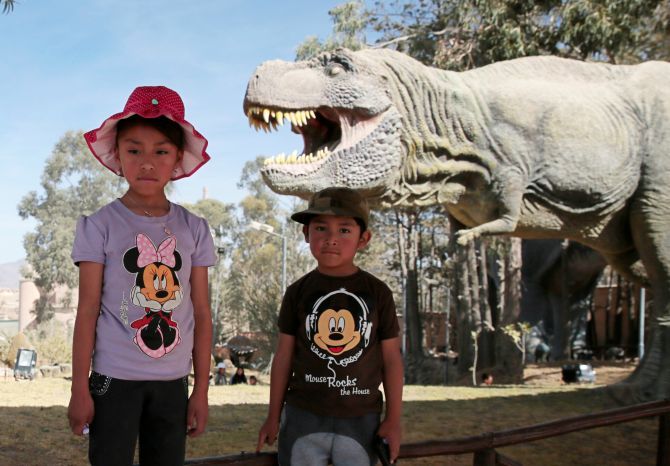 A hill in southeastern Bolivia is home to over 5,000 fossilised dinosaur tracks.
A hill in southeastern Bolivia is home to over 5,000 fossilised dinosaur tracks.
Cal Orcko, on the outskirts of Sucre in Bolivia, is one of the biggest sites for fossilised footprints ever found.
The location is a huge draw for tourists, welcoming some 1,20,000 visitors a year.
Some 65 million years ago, the land in the area was muddy and flat.
With the passing of time, "movements of tectonic plates, skid plates and marine continents" beneath the surface pushed the ground into its nearly upright position, while the mud also dried into limestone.
The footprints were first discovered in the mid-1990s, when rain and erosion uncovered them. Another part was discovered when the cement factory started exploiting the nearby quarry.
Rediff.com presents the terrifying T-Rex footprints and the massive titanosaurs that stun visitors from around the world.
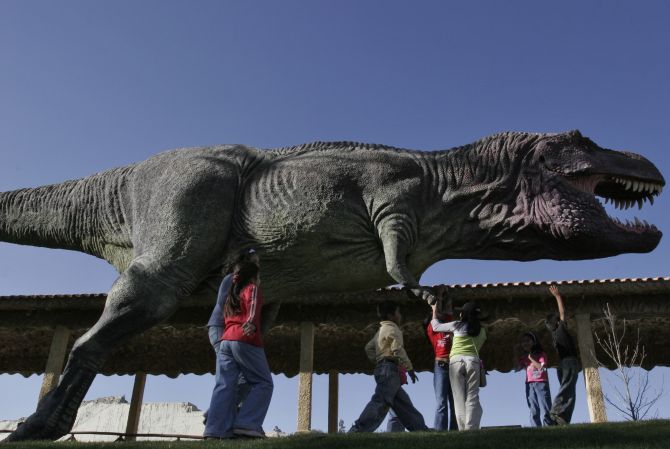
WELCOME TO JURASSIC PARK: Visitors walk under a tyrannosaurus replica inside the Cretacic Park. The site, consisting of a limestone wall covered with the tracks of at least six types of Late Cretaceous dinosaurs, is the largest dinosaur track site known in the world today. All Photographs: David Mercado/Reuters

SMILE PLEASE: A mother takes a photograph of her children while they pose in front of the replica of a Tyrannosaurus Rex at the Cretaceous park in Cal Orcko, on the outskirts of Sucre, Bolivia.
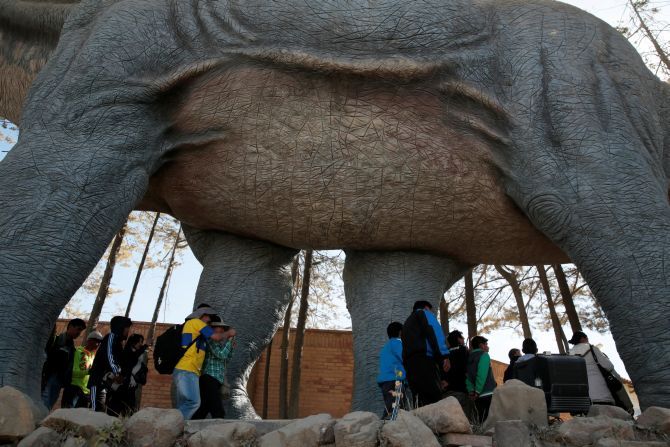
SIZE DOES MATTER: Visitors walk underneath a replica of a Titanosaur at the Cretaceous park in Cal Orcko, on the outskirts of Sucre, Bolivia.

WE NEED A BIGGER TAPE: Paleontologist Sebastian Apesteguia measures the footprint made by a meat-eating predator some 80 million years ago and one of the largest of its kind ever found, at the Maragua Syncline, Bolivia.

CLASH OF THE TITANASAURS: The replica of a Titanosaur is seen at the Cretaceous park in Cal Orcko, on the outskirts of Sucre, Bolivia.
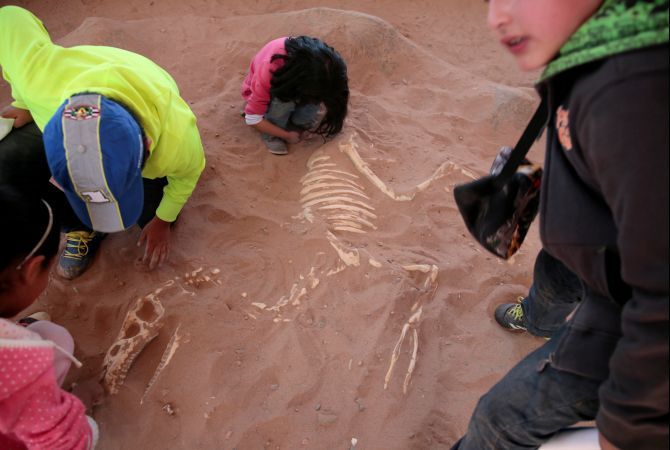
NO TOUCHING: Children play with the replica of a dinosaur fossil at the Cretaceous park in Cal Orcko, on the outskirts of Sucre, Bolivia.
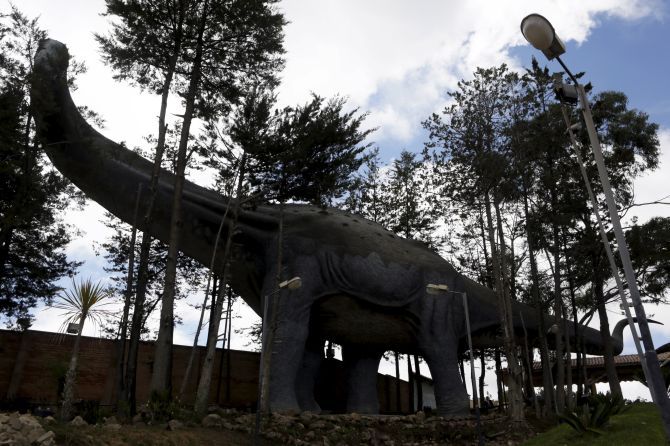
THE LAND BEFORE TIME: A replica of an ancient dinosaur stands tall at the park.
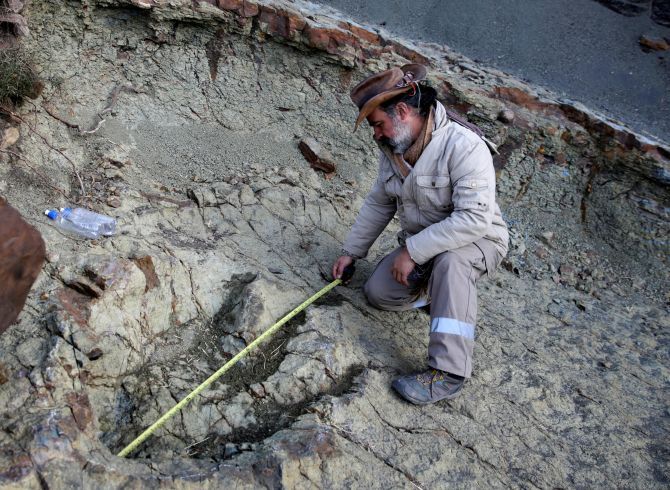
WAS THIS A MINI GODZILLA: A paleontologist measures the footprint made by a meat-eating predator some 80 million years ago and one of the largest of its kind ever found.

IN CASE OF DINOSAUR RUN UP: A child walks up a playground climber with dinosaur footprints at the Cretaceous park in Cal Orcko, on the outskirts of Sucre, Bolivia.
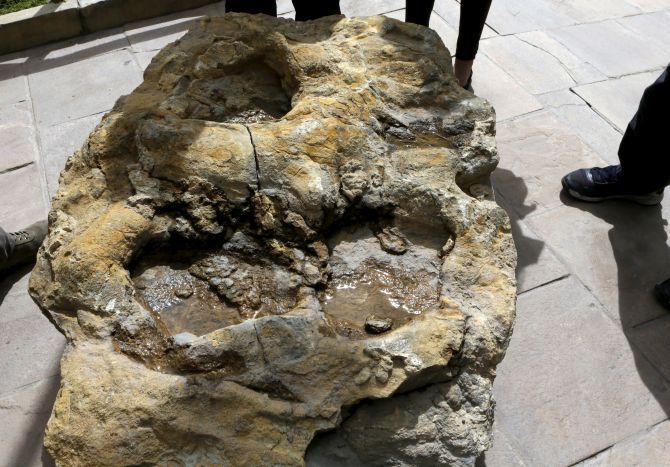
BOOM WENT THE VOLCANO: A piece of volcanic rock with dinosaur footprints is displayed at the Cretaceous Park of Cal Orcko at the FANCESA limestone quarry in Sucre, Bolivia. Frequent landslides at the paleontologic site of Cal Orcko constantly reveal new track ways, with some belonging to new species, according to local media.











 © 2025
© 2025